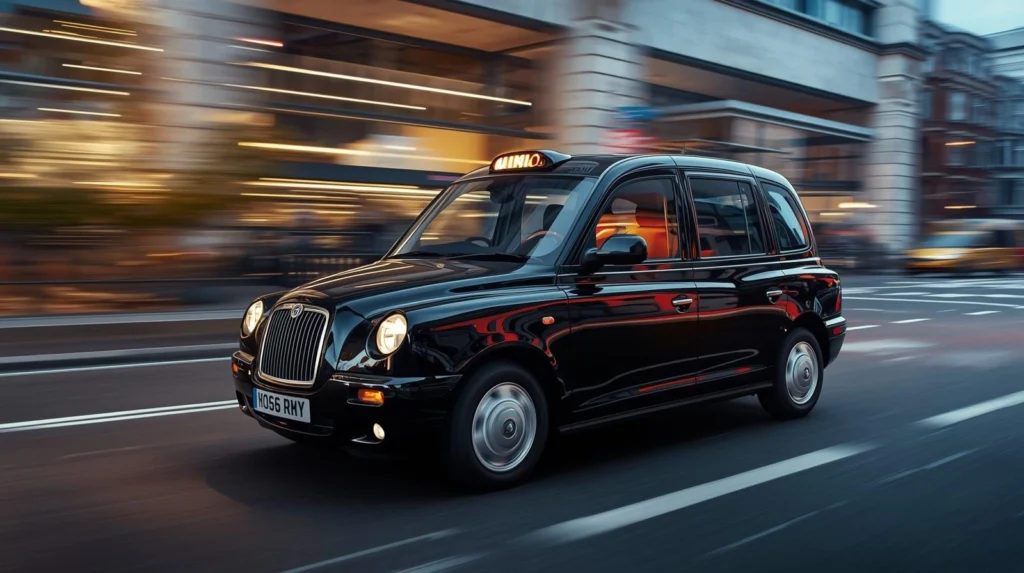In the fast-paced, bustling city of London, the question has always been: is public transport the most efficient and reliable way to get around? Why More Londoners Are Choosing Minicabs Over Public Transport in 2025 For decades, Londoners have relied on the iconic red buses and the Tube to navigate their city. However, in recent years, there’s been a noticeable shift. More and more people are opting for minicabs instead.
This growing trend reflects a broader change in London’s transportation habits. Why are Londoners increasingly choosing private hire vehicles over traditional public transport? In this guide, we’ll explore the reasons behind this shift and how it impacts not only commuters but also the entire transportation ecosystem in 2025.
In the following sections, we will discuss the convenience, safety, cost-effectiveness, and personalized services offered by minicabs, and how these factors are shaping the future of travel in London.
Why Are Londoners Choosing Minicabs Over Public Transport?
Convenience at Your Fingertips
When it comes to convenience, minicabs provide a level of flexibility that public transport simply can’t match. With the ability to book a minicab at the touch of a button via mobile apps, the ease of access is unparalleled.
Public transport, despite its extensive coverage, can be unreliable due to delays, overcrowding, or long waiting times. In contrast, minicabs offer a direct route to your destination, often with the ability to select your pick-up and drop-off points, avoiding the need for multiple transfers so, choosing a minicabs over public transport is more reliable.
Pro Tip: If you’re traveling with luggage or in a group, a minicab is a far more practical choice than squeezing into a crowded bus or train.
Safety First: Minimizing Exposure
In a post-pandemic world, personal safety is a top priority for many Londoners. Public transport, with its shared spaces and high foot traffic, is often seen as a breeding ground for germs and viruses. Minicabs, on the other hand, offer a private space where passengers can travel safely with fewer interactions.
Furthermore, with professional drivers who undergo rigorous background checks and meet safety standards set by Transport for London (TfL), minicabs are often perceived as a safer alternative.
Recent statistics show that 68% of Londoners feel more secure for choosing a minicabs over public transport, especially during late hours. This sense of safety is crucial for many, particularly those traveling alone or at night.
Cost-Effectiveness: Better Value for Money
While public transport is traditionally seen as the cheaper option, minicabs are now more affordable than ever before, thanks to competitive pricing models introduced by private hire companies. With the growth of services like Uber and Bolt, prices have become more transparent and flexible, offering Londoners affordable alternatives for short and long-distance trips.
Moreover, minicabs often offer better value for money, especially if you’re traveling in a group. The cost per person can be far lower than that of purchasing multiple train or bus tickets. For daily commuters, subscription-based minicab services can also provide cost savings.
Case Study: One commuter, Sarah, compared her monthly expenses on public transport and minicabs. She found that taking a minicab every day saved her time and offered a comparable cost when factoring in the convenience of direct routes and less waiting time.
Time-Saving: Avoiding Traffic Hassles
London’s streets are notorious for their traffic jams, and public transport often gets stuck in the same gridlock. Minicabs, however, allow for more direct routes, avoiding crowded and often slower buses and trains. For those in a rush, minicabs can take advantage of the city’s vast network of side streets, helping drivers navigate around traffic-heavy areas.
For many Londoners, especially those with busy schedules, the time saved by choosing a minicab over public transport is invaluable. The ability to reach your destination faster without the hassle of delays and detours is a huge selling point.
The Rise of App-Based Minicab Services
One of the most significant reasons behind the rise of minicabs over public transport is the advent of app-based services. Companies like Uber, Bolt, and Lyft have revolutionized the way people travel, making it easier and more efficient to book rides on-demand. With real-time tracking, price transparency, and the ability to schedule rides in advance, minicabs are far more accessible than traditional taxis or public transport.
Moreover, the app-based booking system gives passengers the ability to rate their drivers, ensuring a level of accountability and satisfaction that public transport simply cannot offer.
Expert Insight: “As more Londoners rely on apps for everyday services, minicabs have become the go-to solution for anyone looking for convenience, affordability, and reliability,” says John Smith, a transportation expert in London.
What Impact Has This Shift Had on London’s Public Transport System?
With the rise of minicabs, public transport is facing increased competition. While it remains an essential part of the city’s infrastructure, TfL has had to adapt. There have been efforts to modernize services, improve safety, and introduce new ticketing systems to retain passengers.
However, the shift towards minicabs has led to a decline in revenue for public transport. Some reports indicate a drop of over 20% in daily commuters post-pandemic, with many opting for more flexible and private travel options.
Pro Tip: If you’re still using public transport, consider checking out the latest TfL app updates, which offer features like real-time train updates and mobile ticketing to enhance the commuter experience.
Are Minicabs the Future of Travel in London?
Looking ahead, it’s clear that minicabs are becoming an integral part of London’s transportation ecosystem. With continued innovations in app technology, electric minicabs, and ride-sharing options, the future looks bright for this mode of travel.
Londoners are increasingly gravitating toward minicabs due to their convenience, safety, cost-effectiveness, and time-saving benefits. As these services continue to evolve and expand, minicabs may eventually become the dominant choice for travel in London.
Conclusion
In 2025, Londoners are choosing minicabs over public transport for a variety of reasons: convenience, safety, cost-effectiveness, and time-saving. With the growth of app-based services and the changing landscape of public transport, minicabs are quickly becoming the preferred travel option for many.
As a business owner, if you haven’t already explored the potential of offering minicab services or promoting this mode of transport, now is the time. By understanding the trends and adapting to the needs of your customers, you can capitalize on this growing demand and provide a service that meets the needs of the modern London commuter.
FAQ Section
1۔ Are minicabs safer than public transport in London?
Yes, minicabs are generally considered safer because they offer a private and controlled environment. Drivers are background-checked, and passengers can track their ride in real-time via apps.
2۔ Is it cheaper to use a minicab than public transport in London?
It can be cheaper, especially for short trips or if you’re traveling with multiple people. Many app-based minicab services offer competitive pricing, sometimes even lower than train or bus fares.
3۔ Can I pre-book a minicab in London?
Yes, minicabs can be pre-booked via various apps. This allows for greater flexibility and eliminates waiting time compared to public transport.
4۔ Do minicabs follow the same routes as public transport?
Minicabs usually take more direct routes, which means fewer stops and potentially faster travel times compared to buses and trains.
5۔ Are there eco-friendly options for minicabs in London?
Yes, many minicab services are now introducing electric and hybrid vehicles, contributing to a greener, more sustainable transportation system in London.



